The burgeoning small SUV segment is teeming with models vying for consumer attention, but two stand out as front-runners: the Kia Stonic and the SEAT Arona. As we delve into this comparison, we’ll explore their technical specifications, innovations, and how they perform on the road, providing insights to help potential buyers make an informed decision.
Kia Stonic vs SEAT Arona – Which model is better for everyday use?
Both models have their strengths – but which one suits you more?
Compare performance, efficiency, price and space directly: Kia Stonic or SEAT Arona?
Technical Specifications: Power and Performance
When it comes to engine options, the Kia Stonic offers a range of petrol engines, including a petrol mild-hybrid (MHEV) variant, providing a blend of efficiency and performance. The available power outputs span from 79 HP to 100 HP, delivering torque ranging from 113 Nm to 172 Nm. The Stonic boasts a 0-100 km/h acceleration time of 11.3 seconds for the more powerful engine, while it utilizes a front-wheel-drive layout and can be paired with either a manual gearbox or a dual-clutch automatic transmission.
In contrast, the SEAT Arona brings a more powerful engine lineup, with outputs reaching up to 150 HP. The Arona's acceleration to 100 km/h can be achieved in a sporty 8.4 seconds, showcasing its agility and responsiveness. It also features a front-wheel-drive system and offers both manual and automatic transmission choices. The torque figures on the Arona can go as high as 250 Nm, giving it a robust feel on the roads.
Fuel Efficiency and Environmental Considerations
In terms of fuel efficiency, the Kia Stonic stands commendably with a consumption rate ranging between 5.5 to 5.8 L/100km, depending on the engine choice. Its CO2 emissions are between 125 and 132 g/km, placing it in the D efficiency class, which is competitive for the SUV category.
The SEAT Arona, on the other hand, slightly edges out with a fuel consumption of 5.4 to 5.6 L/100km, and its CO2 emissions vary from 122 to 128 g/km. Both vehicles are designed to be environmentally conscious yet still deliver an enjoyable driving experience.
Dimensions and Practicality
Dimensionally, the Kia Stonic measures 4140 mm in length, 1760 mm in width, and 1505 mm in height, making it a compact SUV that is easy to maneuver in urban settings. The trunk capacity is a practical 352 liters, accommodating everyday cargo needs.
Conversely, the SEAT Arona is slightly larger at 4153 mm in length, 1780 mm in width, and 1537 mm in height, allowing for a more spacious interior. It offers a trunk capacity of 400 liters, providing additional room for luggage or shopping, a major plus for family outings or road trips.
Comfort and Interior Features
Both the Kia Stonic and SEAT Arona emphasize comfort and modern vehicle connectivity. The Stonic features a user-friendly infotainment system, often praised for its straightforward design and smartphone integration capabilities. Interior quality is commendable, providing a comfortable experience for all five occupants.
The SEAT Arona also excels in interior technology, offering advanced infotainment systems with features such as a premium sound system and a digital cockpit. Additionally, it includes a host of active safety features and driver assistance technologies, enhancing overall safety and peace of mind while driving.
Final Verdict: Which SUV Reigns Supreme?
Choosing between the Kia Stonic and the SEAT Arona largely hinges on personal preference and specific needs. The Stonic appeals to those seeking a compact SUV with efficient engines and a straightforward approach to driving. Its appealing design and practical features make it a worthy contender.
On the other hand, the SEAT Arona positions itself as the sportier option, delivering greater power and agility, alongside slightly more interior space. With its robust engine options and superior technology features, the Arona presents a compelling case, especially for those who prioritize performance.
Ultimately, both SUVs offer unique strengths and innovations worthy of consideration, ensuring that buyers in this competitive segment have excellent choices to consider for their next vehicle.
Here’s where it gets real: The technical differences in detail
Costs and Efficiency:
When it comes to price and running costs, the biggest differences usually appear. This is often where you see which car fits your budget better in the long run.
SEAT Arona has a slight advantage in terms of price – it starts at 19300 £, while the Kia Stonic costs 20100 £. That’s a price difference of around 832 £.
Fuel consumption also shows a difference: SEAT Arona manages with 5.40 L and is therefore slight more efficient than the Kia Stonic with 5.60 L. The difference is about 0.20 L per 100 km.
Engine and Performance:
Power, torque and acceleration say a lot about how a car feels on the road. This is where you see which model delivers more driving dynamics.
When it comes to engine power, the SEAT Arona has a evident edge – offering 150 HP compared to 115 HP. That’s roughly 35 HP more horsepower.
In acceleration from 0 to 100 km/h, the SEAT Arona is evident quicker – completing the sprint in 8.40 s, while the Kia Stonic takes 10.70 s. That’s about 2.30 s faster.
In terms of top speed, the SEAT Arona performs a bit better – reaching 210 km/h, while the Kia Stonic tops out at 182 km/h. The difference is around 28 km/h.
There’s also a difference in torque: SEAT Arona pulls to a small extent stronger with 250 Nm compared to 200 Nm. That’s about 50 Nm difference.
Space and Everyday Use:
Beyond pure performance, interior space and usability matter most in daily life. This is where you see which car is more practical and versatile.
Both vehicles offer seating for 5 people.
In curb weight, SEAT Arona is hardly perceptible lighter – 1188 kg compared to 1205 kg. The difference is around 17 kg.
In terms of boot space, the SEAT Arona offers to a small extent more room – 400 L compared to 352 L. That’s a difference of about 48 L.
In maximum load capacity, the SEAT Arona performs minimal better – up to 1280 L, which is about 125 L more than the Kia Stonic.
When it comes to payload, SEAT Arona slightly takes the win – 522 kg compared to 445 kg. That’s a difference of about 77 kg.
Who comes out on top?
Overall, the SEAT Arona shows itself to be wins the duel decisively and secures the title of DriveDuel Champion.
It convinces with the more balanced overall package and proves to be the more versatile choice for everyday use.
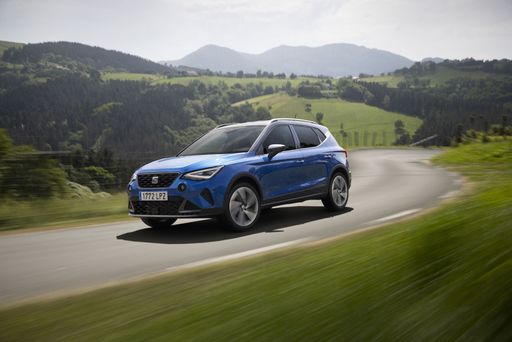 @ SEAT S.A. / SEAT Media Center
@ SEAT S.A. / SEAT Media Center
SEAT Arona
Kia Stonic
The Kia Stonic is a sprightly compact crossover that mixes city-friendly agility with a cheeky, modern design — perfect for buyers who want style without sacrificing sense. Inside it serves up clever practicality and a bright, well-equipped cabin, making everyday driving feel a bit more fun than it has any right to be.
details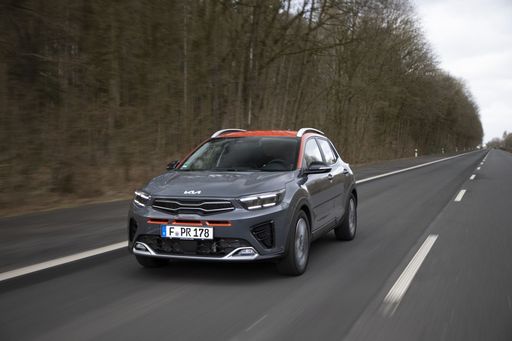 @ Kia Corporation
@ Kia Corporation
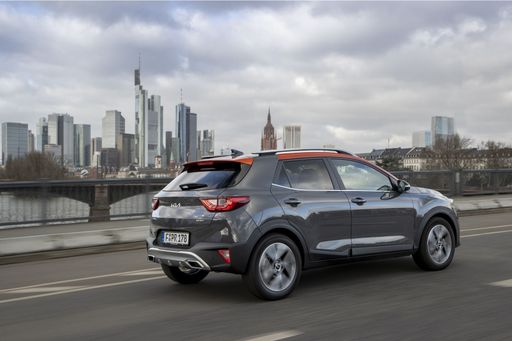 @ Kia Corporation
@ Kia Corporation
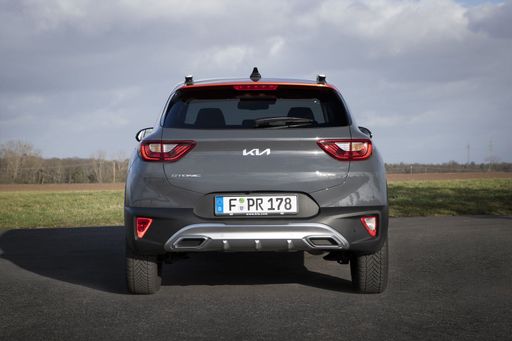 @ Kia Corporation
@ Kia Corporation
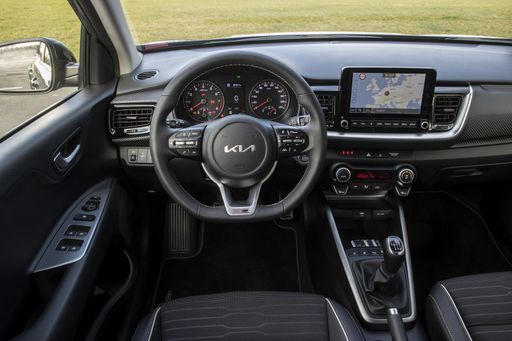 @ Kia Corporation
@ Kia Corporation
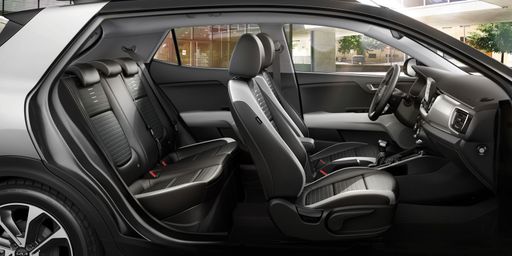 @ Kia Corporation
@ Kia Corporation
SEAT Arona
The SEAT Arona is a cheeky urban crossover that mixes sharp styling with sensible practicality, making it an appealing choice for buyers who want personality without fuss. It’s zippy in traffic, comfortable enough for daily driving, and brings enough character to make routine journeys feel a little more fun.
details @ SEAT S.A. / SEAT Media Center
@ SEAT S.A. / SEAT Media Center
 @ SEAT S.A. / SEAT Media Center
@ SEAT S.A. / SEAT Media Center
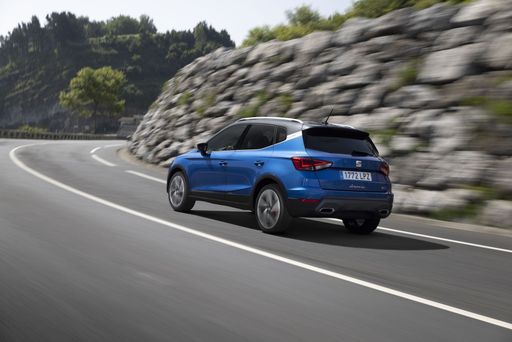 @ SEAT S.A. / SEAT Media Center
@ SEAT S.A. / SEAT Media Center
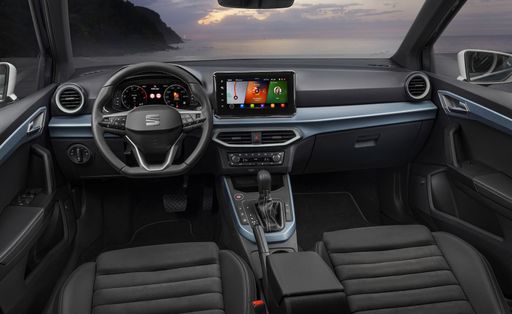 @ SEAT S.A. / SEAT Media Center
@ SEAT S.A. / SEAT Media Center
 @ Kia Corporation
@ Kia Corporation
|
 @ SEAT S.A. / SEAT Media Center
@ SEAT S.A. / SEAT Media Center
|
|
|
|
Costs and Consumption |
|
|---|---|
|
Price
20100 - 26600 £
|
Price
19300 - 29300 £
|
|
Consumption L/100km
5.6 - 5.9 L
|
Consumption L/100km
5.4 - 5.6 L
|
|
Consumption kWh/100km
-
|
Consumption kWh/100km
-
|
|
Electric Range
-
|
Electric Range
-
|
|
Battery Capacity
-
|
Battery Capacity
-
|
|
co2
127 - 133 g/km
|
co2
122 - 128 g/km
|
|
Fuel tank capacity
45 L
|
Fuel tank capacity
40 L
|
Dimensions and Body |
|
|---|---|
|
Body Type
SUV
|
Body Type
SUV
|
|
Seats
5
|
Seats
5
|
|
Doors
5
|
Doors
5
|
|
Curb weight
1205 - 1270 kg
|
Curb weight
1188 - 1268 kg
|
|
Trunk capacity
352 L
|
Trunk capacity
400 L
|
|
Length
4165 mm
|
Length
4153 mm
|
|
Width
1760 mm
|
Width
1780 mm
|
|
Height
1520 mm
|
Height
1537 mm
|
|
Max trunk capacity
1155 L
|
Max trunk capacity
1280 L
|
|
Payload
440 - 445 kg
|
Payload
502 - 522 kg
|
Engine and Performance |
|
|---|---|
|
Engine Type
Petrol, Petrol MHEV
|
Engine Type
Petrol
|
|
Transmission
Manuel, Automatic
|
Transmission
Manuel, Automatic
|
|
Transmission Detail
Manual Gearbox, Dual-Clutch Automatic
|
Transmission Detail
Manual Gearbox, Dual-Clutch Automatic
|
|
Drive Type
Front-Wheel Drive
|
Drive Type
Front-Wheel Drive
|
|
Power HP
100 - 115 HP
|
Power HP
95 - 150 HP
|
|
Acceleration 0-100km/h
10.7 - 12.1 s
|
Acceleration 0-100km/h
8.4 - 11.3 s
|
|
Max Speed
179 - 182 km/h
|
Max Speed
182 - 210 km/h
|
|
Torque
172 - 200 Nm
|
Torque
175 - 250 Nm
|
|
Number of Cylinders
3
|
Number of Cylinders
3 - 4
|
|
Power kW
74 - 85 kW
|
Power kW
70 - 110 kW
|
|
Engine capacity
998 cm3
|
Engine capacity
999 - 1498 cm3
|
General |
|
|---|---|
|
Model Year
2025
|
Model Year
2025
|
|
CO2 Efficiency Class
D
|
CO2 Efficiency Class
D
|
|
Brand
Kia
|
Brand
SEAT
|
Is the Kia Stonic offered with different drivetrains?
The Kia Stonic is offered with Front-Wheel Drive.
The prices and data displayed are estimates based on German list prices and may vary by country. This information is not legally binding.
